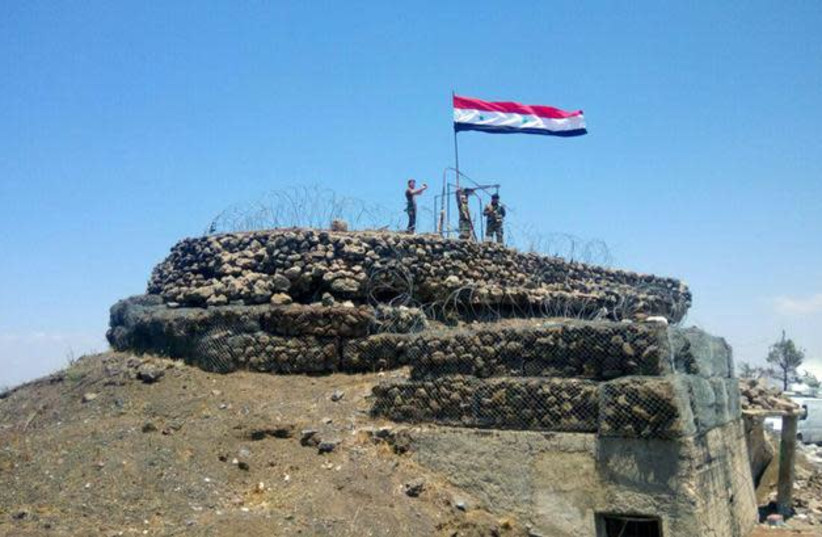For Israelis, Syria is a trouble-making, war-torn country that supports terrorist attacks on Israel. Yet, parts of it are archaeological gems.
The Dura-Europos site in modern-day Syria is famous for its exceptional state of preservation. Like Pompeii, this ancient city has yielded many great discoveries and serves as a window into the world of the ancient Hellenistic, Parthian, and Roman periods. Yet despite the prominence of Dura-Europos in Near Eastern scholarship, there is another city only a few kilometers down the Euphrates River that presents a long-neglected opportunity for study.
A new paper in the Journal of Near Eastern Studies titled “The Ancient City of Giddan/Eddana (Anqa, Iraq) the “Forgotten Twin of Dura-Europos” identifies the city of Anqa as a near mirror image of Dura-Europos, of the same size, comparable composition, and potentially equal value to scholars of the region.
Anqa is located just across the Syrian border from Dura-Europos, in the present-day Al-Qaim district of the Anbar Governorate in Iraq. Its remains include an identifying tel mound at the northern end of the site, a polygonal inner wall circuit, and a large outer defensive wall (enceinte).
Situated at a point where the Euphrates floodplain narrows radically, the city would have controlled movement between the populous section of the valley upstream and the trade route downstream linking Syria, Northern Mesopotamia, and Babylonia, giving it great strategic and economic significance.

Dura-Europos was built on a steep slope 90 meters above the southwestern bank of the Euphrates river. It is located near the village of Salhiyé, in present-day Syria. It was founded around 300 BCE by Seleucus I Nicator who also established the Seleucid Empire as one of the generals (Diadochi) of Alexander the Great. In 113 BC, Parthians captured and held it, with one brief Roman intermission of 50 years.
The Romans decisively captured Dura-Europos in 165 CE and greatly expanded it as their easternmost stronghold in Mesopotamia until it was captured by the Sasanian Empire after a siege in 256–257 CE. Its population was deported, and the abandoned city eventually disappeared from sight under sand and mud.
Dura-Europos is of extreme archaeological importance and was called the “Pompeii of the Desert” because it was abandoned after its conquest in 257 CE, and nothing was built over it. As we remember, It was looted and mostly destroyed between 2011 and 2014 by the Islamic State during the Syrian Civil War.
Archaeologists did not pay attention to site until 1850s
However, archaeologists paid no attention to the site until the publication in 1850 of a British Middle Euphrates expedition survey, followed by a more thorough study of the site that had been carried out in the late 1930s by Aurel Stein, including aerial photographs of the standing structures, but even after these forays, there was little desire to learn more than the geographical location of this twin city to Dura-Europos.
The article author, University of Leicester Prof. Simon James, an archeologist of the Iron Age and Roman period, writes that one reason for the disparity in interest between Anqa and Dura-Europos is the history of British and French colonial intervention in the region.
His research interests are the Roman world and its interactions with the Celts and Middle Eastern peoples.
In 1920, as a result of the San Remo conference, Iraq was placed under British control and Syria under the French. As James wrote, the “new political, military, and administrative boundary created a barrier to research and understanding of the earlier history of the region as a whole.”
Yet while Dura-Europos and some other sites in Iraq and Syria have suffered from looting, destruction, and civilian death as a consequence of conflict in the region, Anqa has remained relatively untouched.
As further archaeological inquiry is performed, he suggested, Anqa may continue to provide valuable insight into the history of the Middle Euphrates. Furthermore, as methods of digital scholarship bring thinkers together “despite political borders,” the practice of studying sites like it may even, in James’s words, help “address the consequences of colonialism in archaeology.”